Turgor pressure
Turgor pressure is the force within the cell that pushes the plasma membrane against the cell wall.[1]
| Look up turgid in Wiktionary, the free dictionary. |
It is also called hydrostatic pressure, and defined as the pressure measured by a fluid, measured at a certain point within itself when at equilibrium.[2] Generally, turgor pressure is caused by the osmotic flow of water and occurs in plants, fungi, and bacteria. The phenomenon is also observed in protists that have cell walls.[3] This system is not seen in animal cells, as the absence of a cell wall would cause the cell to lyse when under too much pressure.[4] The pressure exerted by the osmotic flow of water is called turgidity. It is caused by the osmotic flow of water through a selectively permeable membrane. Osmotic flow of water through a semipermeable membrane is when the water travels from an area with a low-solute concentration, to one with a higher-solute concentration. In plants, this entails the water moving from the low concentration solute outside the cell, into the cell's vacuole.[5]
Mechanism

Osmosis is the process in which water flows from an area with a low solute concentration, to an adjacent area with a higher solute concentration until equilibrium between the two areas is reached.[6] All cells are surrounded by a lipid bi-layer cell membrane which permits the flow of water in and out of the cell while also limiting the flow of solutes. In hypertonic solutions, water flows out of the cell which decreases the cell's volume. When in a hypotonic solution, water flows into the membrane and increases the cell's volume. When in an isotonic solution, water flows in and out of the cell at an equal rate.[4]
Turgidity is the point at which the cell's membrane pushes against the cell wall, which is when turgor pressure is high. When the cell membrane has low turgor pressure, it is flaccid. In plants, this is shown as wilted anatomical structures. This is more specifically known as plasmolysis.[7]

The volume and geometry of the cell affects the value of turgor pressure, and how it can have an effect on the cell wall's plasticity. Studies have shown how smaller cells experience a stronger elastic change when compared to larger cells.[3]
Turgor pressure also plays a key role in plant cell growth where the cell wall undergoes irreversible expansion due to the force of turgor pressure as well as structural changes in the cell wall that alter its extensibility.[8]
Turgor pressure in plants
Turgor pressure within cells is regulated by osmosis and this also causes the cell wall to expand during growth. Along with size, rigidity of the cell is also caused by turgor pressure; a lower pressure results in a wilted cell or plant structure (i.e. leaf, stalk). One mechanism in plants that regulate turgor pressure is its semipermeable membrane, which only allows some solutes to travel in and out of the cell, which can also maintain a minimum amount of pressure. Other mechanisms include transpiration, which results in water loss and decreases turgidity in cells.[9] Turgor pressure is also a large factor for nutrient transport throughout the plant. Cells of the same organism can have differing turgor pressures throughout the organism's structure. In higher plants, turgor pressure is responsible for apical growth of things such as root tips[10] and pollen tubes.[11]
Dispersal
Transport proteins that pump solutes into the cell can be regulated by cell turgor pressure. Lower values allow for an increase in the pumping of solutes; which in turn increases osmotic pressure. This function is important as a plant response when under drought conditions[12] (seeing as turgor pressure is maintained), and for cells which need to accumulate solutes (i.e. developing fruits).[13]
Flowering and reproductive organs
It has been recorded that the petals of Gentiana kochiana and Kalanchoe blossfeldiana bloom via volatile turgor pressure of cells on the plant's adaxial surface.[11] During processes like anther dehiscence, it has been observed that drying endothecium cells cause an outward bending force which led to the release of pollen. This means that lower turgor pressures are observed in these structures due to the fact that they are dehydrated. Pollen tubes are cells which elongate when pollen lands on the stigma, at the carpal tip. These cells grow rather quickly due to increases turgor pressure. These cells undergo tip growth. The pollen tube of lilies can have a turgor pressure of 0–21 MPa when growing during this process.[14]
Seed dispersal
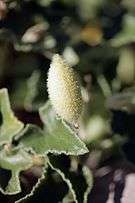
In fruits such as Impatiens parviflora, Oxalia acetosella and Ecballium elaterium, turgor pressure is the method by which seeds are dispersed.[15] In Ecballium elaterium, or squirting cucumber, turgor pressure builds up in the fruit to the point that aggressively detaches from the stalk, and seeds and water are squirted everywhere as the fruit falls to the ground. Turgor pressure within the fruit ranges from .003 to 1.0 MPa.[16]
Growth
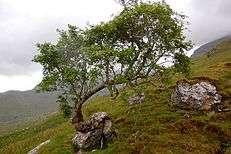
Turgor pressure's actions on extensible cell walls is usually said to be the driving force of growth within the cell.[17] An increase of turgor pressure causes expansion of cells and extension of apical cells, pollen tubes, and in other plant structures such as root tips. Cell expansion and an increase in turgor pressure is due to inward diffusion of water into the cell, and turgor pressure increases due to the increasing volume of vacuolar sap. A growing root cell's turgor pressure can be up to 0.6 MPa, which is over three times that of a car tire. Epidermal cells in a leaf can have pressures ranging from 1.5 to 2.0 MPa.[18] As plants can operate at such high pressures, this can explain why they can grow through asphalt and other hard surfaces.[17]
Turgidity
Turgidity is observed in a cell where the cell membrane is pushed against the cell wall. In some plants, their cell walls loosen at a quicker rate than water can cross the membrane, which results in a cell with lower turgor pressure.[3]
Stomata

Turgor pressure within the stomata regulates when the stomata can open and close, which has a play in transpiration rates of the plant. This is also important because this function regulates water loss within the plant. Lower turgor pressure can mean that the cell has a low water concentration and closing the stomata would help to preserve water. High turgor pressure keeps the stomata open for gas exchanges necessary for photosynthesis.[9]
Mimosa pudica
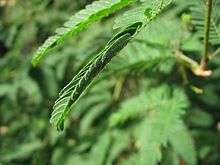
It has been concluded that loss of turgor pressure within the leaves of Mimosa pudica is responsible for the reaction the plant has when touched. Other factors such as changes in osmotic pressure, protoplasmic contraction and increase in cellular permeability have been observed to affect this response. It has also been recorded that turgor pressure is different in the upper and lower pulvinar cells of the plant, and the movement of potassium and calcium ions throughout the cells cause the increase in turgor pressure. When touched, the pulvinus is activated and exudes contractile proteins, which in turn increases turgor pressure and closes the leaves of the plant.[19]
Function in other taxa
As earlier stated, turgor pressure can be found in other organisms besides plants and can play a large role in the development, movement, and nature of said organisms.
Fungi
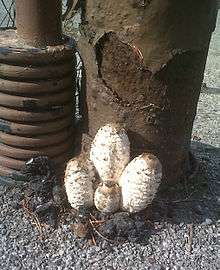
In fungi, turgor pressure has been observed as a large factor in substrate penetration. In species such as Saprolegnia ferax, Magnaporthe grisea and Aspergillus oryzae, immense turgor pressures have been observed in their hyphae. The study showed that they could penetrate substances like plant cells, and synthetic materials such as polyvinyl chloride.[20] In observations of this phenomenon, it is noted that invasive hyphal growth is due to turgor pressure, along with the coenzymes secreted by the fungi to invade said substrates.[21] Hyphal growth is directly related to turgor pressure, and growth slows as turgor pressure decreases. In Magnaporthe grisea, pressures of up to 8 MPa have been observed.[22]
Protists
Some protists do not have cell walls and cannot experience turgor pressure. These few protists are ones that use their contractile vacuole to regulate the quantity of water within the cell. Protist cells avoid lysing in solutions by utilizing a vacuole which pumps water out of the cells to maintain osmotic equilibrium.[23]
Animals
Turgor pressure is not observed in animal cells because they lack a cell wall. In organisms with cell walls, the cell wall prevents the cell from lysing from high-pressure values.[1]
Diatoms
In Diatoms, the Heterokontophyta have polyphyletic turgor-resistant cell walls. Throughout these organisms' life cycle, carefully controlled turgor pressure is responsible for cell expansion and for the release of sperm, but not for things such as seta growth.[24]
Cyanobacteria
Gas-vaculate cyanobacterium are the ones generally responsible for water-blooms. They have the ability to float due to the accumulation of gases within their vacuole, and the role of turgor pressure and its effect on the capacity of these vacuoles has been observed in varying scientific papers.[25][26] It is noted that the higher the turgor pressure, the lower the capacity of the gas-vacuoles in different cyanobacterium. Experiments used to correlate osmosis and turgor pressure in prokaryotes have been used to show how diffusion of solutes into the cell have a play on turgor pressure within the cell.[27]
Measurements
When measuring turgor pressure in plants, many things have to be taken into account. It is generally stated that fully turgid cells have a turgor pressure value which is equal to that of the cell and that flaccid cells have a value at or near zero. Other cellular mechanisms taken into consideration include the protoplast, solutes within the protoplast (solute potential), transpiration rates of the plant and the tension of cell walls. Measurement is limited depending on the method used, some of which are explored and explained below. Not all methods can be used for all organisms, due to size and other properties. For example, a diatom doesn't have the same properties as a plant, which would place constrictions on what could be used to infer turgor pressure.[28]
Units
Units used to measure turgor pressure are independent from the measures used to infer its values. Common units include bars, MPa, or newtons per square meter. 1 bar is equal to .1 MPa.[29]
Methods
Water potential equation
Turgor pressure can be deduced when total water potential, Ψw, and osmotic potential, Ψs, are known in a water potential equation.[30] These equations are used to measure the total water potential of a plant by using variables such as matric potential, osmotic potential, pressure potential, gravitational effects and turgor pressure.[31] After taking the difference between Ψs and Ψw, the value for turgor pressure is given. When using this method, gravity and matric potential are considered to be negligible, since their values are generally either negative or close to zero.[30]
Pressure-bomb technique
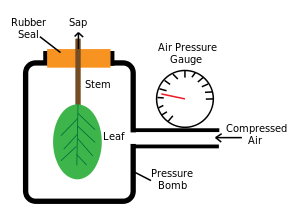
The pressure bomb technique was developed by Scholander et al., reviewed by Tyree and Hammel in their 1972 publication, in order to test water movement through plants. The instrument is used to measure turgor pressure by placing a leaf (with stem attached) into a closed chamber where pressurized gas is added in increments. Measurements are taken when xylem sap appears out of the cut surface and at the point which it doesn't accumulate or retreat back into the cut surface.[32]
Atomic force microscope
Atomic force microscopes use a type of scanning probe microscopy (SPM). Small probes are introduced to the area of interest, and a spring within the probe measures values via displacement.[33] This method can be used to measure turgor pressure of organisms. When using this method, supplemental information such as continuum mechanic equations, single force depth curves and cell geometries can be used to quantify turgor pressures within a given area (usually a cell).
Pressure probe
This machine was originally used to measure individual algal cells, but can now be used on larger-celled specimens. It is usually used on higher plant tissues but wasn't used to measure turgor pressure until Hüsken and Zimmerman improved on the method.[34] Pressure probes measure turgor pressure via displacement. A glass micro-capillary tube is inserted into the cell and whatever the cell exudes into the tube is observed through a microscope. An attached device then measures how much pressure is required to push the emission back into the cell.[32]
Micro-manipulation probe
These are used to accurately quantify measurements of smaller cells. In an experiment by Weber, Smith and colleagues, single tomato cells were compressed between a micro-manipulation probe and glass to allow the pressure probe's micro-capillary to find the cell's turgor pressure.[35]
Theoretical speculations
Negative turgor pressure
It has been observed that the value of Ψw decreases as the cell becomes more dehydrated,[30] but scientists have speculated whether this value will continue to decrease but never fall to zero, or if the value can be less than zero. There have been studies[36][37] which show that negative cell pressures can exist in xerophytic plants, but a paper by M. T. Tyree explores whether this is possible, or a conclusion based on misinterpreted data. In his paper, he concludes that by miscategorizing "bound" and "free" water in a cell, researchers that claimed to have found negative turgor pressure values were incorrect. By analyzing the isotherms of apoplastic and symplastic water, he shows that negative turgor pressures cannot be present within arid plants due to net water loss of the specimen during droughts. Despite his analysis and interpretation of data, negative turgor pressure values are still used within the scientific community.[38]
Tip growth in higher plants
A hypothesis formed by M. Harold and his colleagues suggests that tip growth in higher plans is amoebic in nature, and isn't caused by turgor pressure as is widely believed, meaning that extension is caused by the actin cytoskeleton in these plant cells. Regulation of cell growth is implied to be caused by cytoplasmic micro-tubules which control the orientation of cellulose fibrils, which are deposited into the adjacent cell wall and results in growth. In plants, the cells are surrounded by cell walls and filamentous proteins which retain and adjust the plant cell's growth and shape. As explained in the paper, lower plants grow through apical growth, which differs since the cell wall only expands on one end of the cell.[39]
References
- Pritchard, Jeremy (2001). Turgor Pressure. Encyclopedia of Life Sciences. American Cancer Society. doi:10.1038/npg.els.0001687. ISBN 9780470015902.
- Fricke, Wieland (January 2017). "Turgor Pressure". Encyclopedia of Life Sciences.
- Steudle, Ernst (February 1977). "Effect of Turgor Pressure and Cell Size on the Wall Elasticity of Plant Cells". Plant Physiology. 59 (2): 285–9. doi:10.1104/pp.59.2.285. PMC 542383. PMID 16659835.
- "Khan Academy". Khan Academy. Retrieved 2017-04-27.
- "Osmosis (Cellular) – Osmosis In Plant Cells". science.jrank.org. Retrieved 2017-04-27.
- "GCSE Bitesize: Osmosis in cells". BBC.
- "Plasmolysis in Elodea Plant Cells – Science NetLinks". sciencenetlinks.com. Retrieved 2017-04-27.
- Jordan, B.M., and Dumais, J. (2010). "Biomechanics of Plant Cell Growth". Encyclopedia of Life Sciences.
- Waggoner, Paul E.; Zelitch, Israel (1965-12-10). "Transpiration and the Stomata of Leaves". Science. 150 (3702): 1413–1420. Bibcode:1965Sci...150.1413W. doi:10.1126/science.150.3702.1413. PMID 17782290.
- Shimazaki, Yumi; Ookawa, Taiichiro; Hirasawa, Tadashi (2005-09-01). "The Root Tip and Accelerating Region Suppress Elongation of the Decelerating Region without any Effects on Cell Turgor in Primary Roots of Maize under Water Stress". Plant Physiology. 139 (1): 458–465. doi:10.1104/pp.105.062091. PMC 1203394. PMID 16100358.
- Beauzamy, Léna; Nakayama, Naomi; Boudaoud, Arezki (2014-11-01). "Flowers under pressure: ins and outs of turgor regulation in development". Annals of Botany. 114 (7): 1517–1533. doi:10.1093/aob/mcu187. PMC 4204789. PMID 25288632.
- Fisher, Donald B.; Cash-Clark, Cora E. (2017-04-27). "Gradients in Water Potential and Turgor Pressure along the Translocation Pathway during Grain Filling in Normally Watered and Water-Stressed Wheat Plants". Plant Physiology. 123 (1): 139–148. doi:10.1104/pp.123.1.139. PMC 58989. PMID 10806232.
- Keller, Markus; Shrestha, Pradeep M. (2014). "Solute accumulation differs in the vacuoles and apoplast of ripening grape berries". Planta. 239 (3): 633–642. doi:10.1007/s00425-013-2004-z. PMID 24310282.
- Benkert, Rainer; Obermeyer, Gerhard; Bentrup, Friedrich-Wilhelm (1997-03-01). "The turgor pressure of growing lily pollen tubes". Protoplasma. 198 (1–2): 1–8. doi:10.1007/BF01282125.
- Hayashi, M.; Feilich, K. L.; Ellerby, D. J. (2009-05-01). "The mechanics of explosive seed dispersal in orange jewelweed (Impatiens capensis)". Journal of Experimental Botany. 60 (7): 2045–2053. doi:10.1093/jxb/erp070. PMC 2682495. PMID 19321647.
- Kozlowski, T.T. (2012). Seed Biology: Importance, Development and Germination. 1. Academic Press. pp. 195–196.
- Kroeger, Jens H.; Zerzour, Rabah; Geitmann, Anja (2011-04-25). "Regulator or Driving Force? The Role of Turgor Pressure in Oscillatory Plant Cell Growth". PLOS ONE. 6 (4): e18549. Bibcode:2011PLoSO...618549K. doi:10.1371/journal.pone.0018549. PMC 3081820. PMID 21541026.
- Serpe, Marcelo D.; Matthews, Mark A. (1994-01-01). "Growth, Pressure, and Wall Stress in Epidermal Cells of Begonia argenteo- guttata L. Leaves during Development". International Journal of Plant Sciences. 155 (3): 291–301. doi:10.1086/297168. JSTOR 2475182.
- Allen, Robert D. (1969-08-01). "Mechanism of the Seismonastic Reaction in Mimosa pudica1". Plant Physiology. 44 (8): 1101–1107. doi:10.1104/pp.44.8.1101. PMC 396223. PMID 16657174.
- Howard, Richard (December 1991). "Penetration of hard substrates by a fungus employing enormous turgor pressures". Proc. Natl. Acad. Sci. 88 (24): 11281–11284. Bibcode:1991PNAS...8811281H. doi:10.1073/pnas.88.24.11281. PMC 53118. PMID 1837147.
- Gervais, Patrick; Abadie, Christophe and Molin, Paul (1999). "Fungal Cells Turgor Pressure: Theoretical Approach and Measurement". Journal of Scientific and Industrial Research. 58 (9): 671–677.CS1 maint: multiple names: authors list (link)
- Money, Nicholas P. (1995-12-31). "Turgor pressure and the mechanics of fungal penetration". Canadian Journal of Botany. 73 (S1): 96–102. doi:10.1139/b95-231.
- "Pearson – The Biology Place". www.phschool.com. Retrieved 2017-04-27.
- Raven, J. A.; Waite, A. M. (2004-04-01). "The evolution of silicification in diatoms: inescapable sinking and sinking as escape?". New Phytologist. 162 (1): 45–61. doi:10.1111/j.1469-8137.2004.01022.x.
- Kinsman, R (January 1991). "Gas vesicle collapse by turgor pressure and its role in buoyancy regulation by Anabaena flos-aquae". Journal of General Microbiology. 143 (3): 1171–1178. doi:10.1099/00221287-137-5-1171.
- Reed, R. H.; Walsby, A. E. (1985-12-01). "Changes in turgor pressure in response to increases in external NaCl concentration in the gas-vacuolate cyanobacterium Microcystis sp". Archives of Microbiology. 143 (3): 290–296. doi:10.1007/BF00411252.
- Oliver, Roderick Lewis (1994-04-01). "Floating and Sinking in Gas-Vacuolate Cyanobacteria1". Journal of Phycology. 30 (2): 161–173. doi:10.1111/j.0022-3646.1994.00161.x.
- Tomos, A. D.; Leigh, R. A.; Shaw, C. A.; Jones, R. G. W. (1984-11-01). "A Comparison of Methods for Measuring Turgor Pressures and Osmotic Pressures of Cells of Red Beet Storage Tissue". Journal of Experimental Botany. 35 (11): 1675–1683. doi:10.1093/jxb/35.11.1675.
- "What is a pressure unit "bar" (b)". www.aqua-calc.com. Retrieved 2017-04-27.
- Kramer, Paul (2012). Water Relations of Plants. Elsevier Science. ISBN 978-0124250406. OCLC 897023594.
- Boundless (2016-05-26). "Pressure, Gravity, and Matric Potential". Boundless.
- Tyree, M. T.; Hammel, H. T. (1972). "The Measurement of the Turgor Pressure and the Water Relations of Plants by the Pressure-bomb Technique". Journal of Experimental Botany. 23 (1): 267–282. doi:10.1093/jxb/23.1.267.
- Beauzamy, Lena (May 2015). "Quantifying Hydrostatic Pressure in Plant Cells by Using Indentation with an Atomic Force Microscope". Biophysical Journal. 108 (10): 2448–2456. Bibcode:2015BpJ...108.2448B. doi:10.1016/j.bpj.2015.03.035. PMC 4457008. PMID 25992723.
- Hüsken, Dieter; Steudle, Ernst; Zimmermann, Ulrich (1978-02-01). "Pressure Probe Technique for Measuring Water Relations of Cells in Higher Plants". Plant Physiology. 61 (2): 158–163. doi:10.1104/pp.61.2.158. PMC 1091824. PMID 16660252.
- Weber, Alain; Braybrook, Siobhan; Huflejt, Michal; Mosca, Gabriella; Routier-Kierzkowska, Anne-Lise; Smith, Richard S. (2015-06-01). "Measuring the mechanical properties of plant cells by combining micro-indentation with osmotic treatments". Journal of Experimental Botany. 66 (11): 3229–3241. doi:10.1093/jxb/erv135. PMC 4449541. PMID 25873663.
- Yang, Dongmei; Li, Junhui; Ding, Yiting; Tyree, Melvin T. (2017-03-01). "Experimental evidence for negative turgor pressure in small leaf cells of Robinia pseudoacacia L versus large cells of Metasequoia glyptostroboides Hu et W.C. Cheng. 2. Höfler diagrams below the volume of zero turgor and the theoretical implication for pressure-volume curves of living cells". Plant, Cell & Environment. 40 (3): 340–350. doi:10.1111/pce.12860. PMID 27861986.
- Oertli, J.J. (July 1986). "The Effect of Cell Size on Cell Collapse under Negative Turgor Pressure". Journal of Plant Physiology. 124 (3–4): 365–370. doi:10.1016/S0176-1617(86)80048-7.
- Tyree, M (January 1976). "Negative Turgor Pressure in Plant Cells: Fact or Fallacy?". Canadian Journal of Botany. 54 (23): 2738–2746. doi:10.1139/b76-294.
- Pickett-Heaps, J.D. and Klein, A.G. (1998). "Tip growth in plant cells may be amoeboid and not generated by turgor pressure". Proceedings: Biological Sciences. 265 (1404): 1453–1459. doi:10.1098/rspb.1998.0457. PMC 1689221.CS1 maint: multiple names: authors list (link)